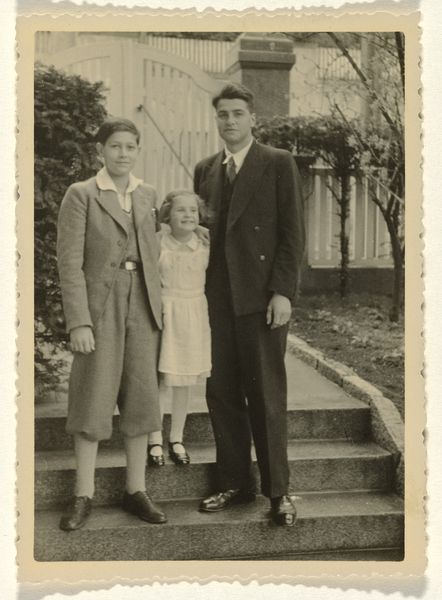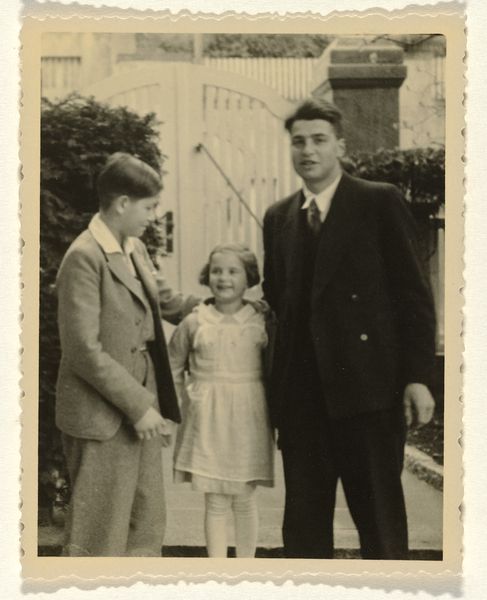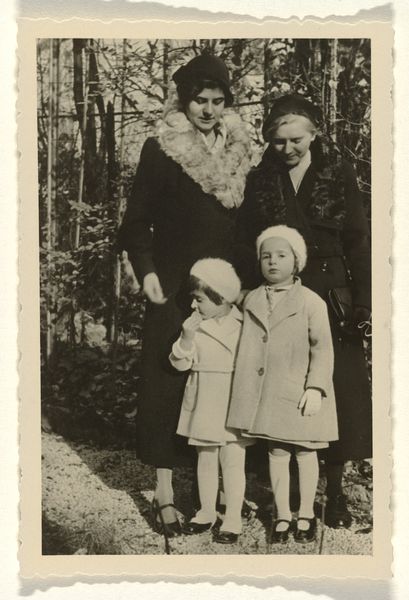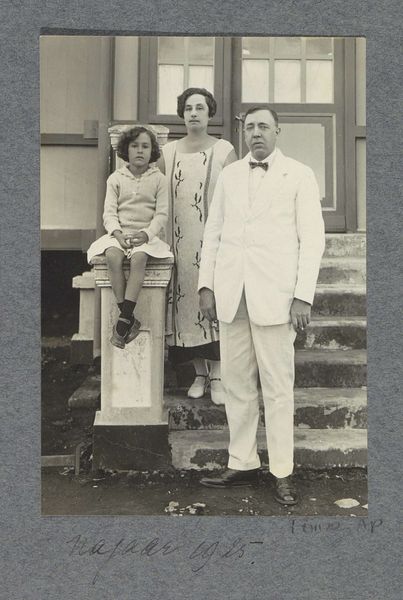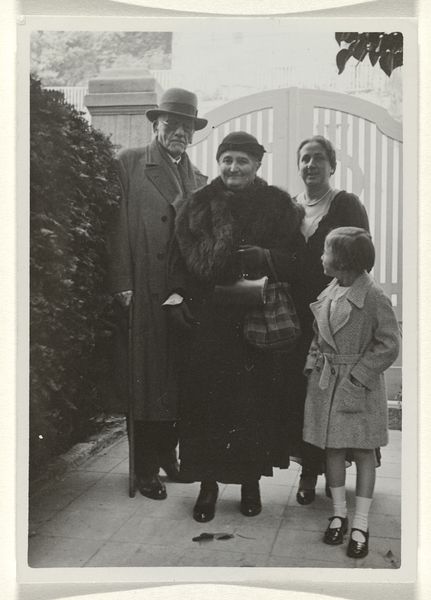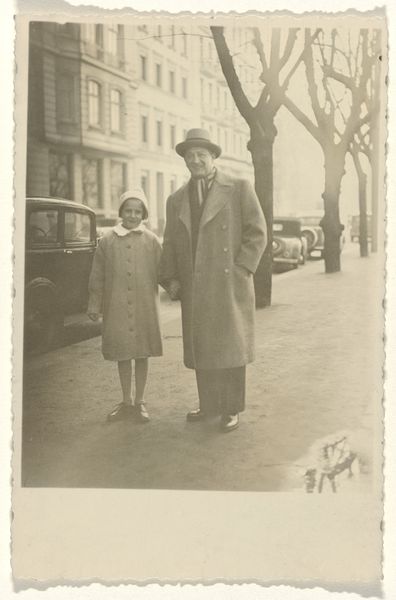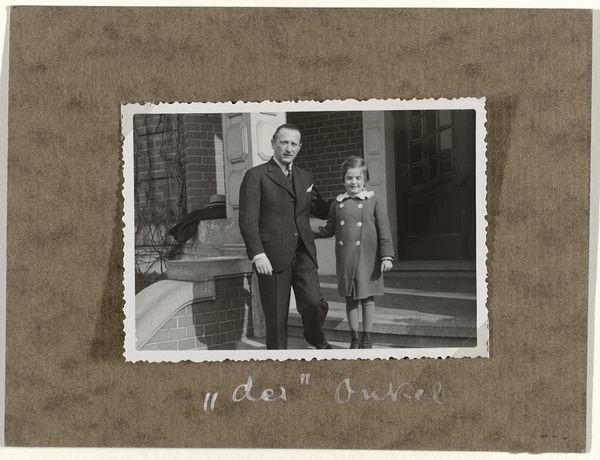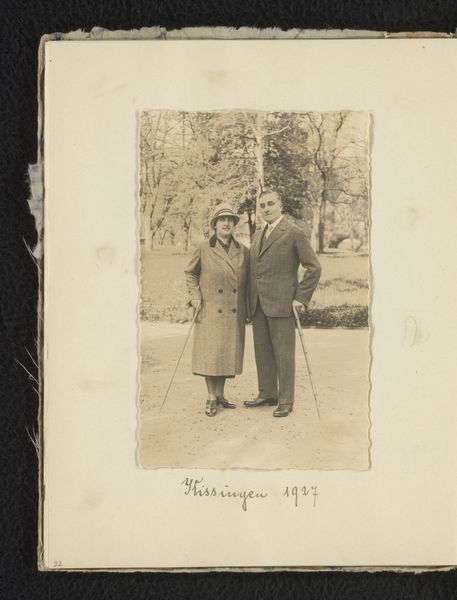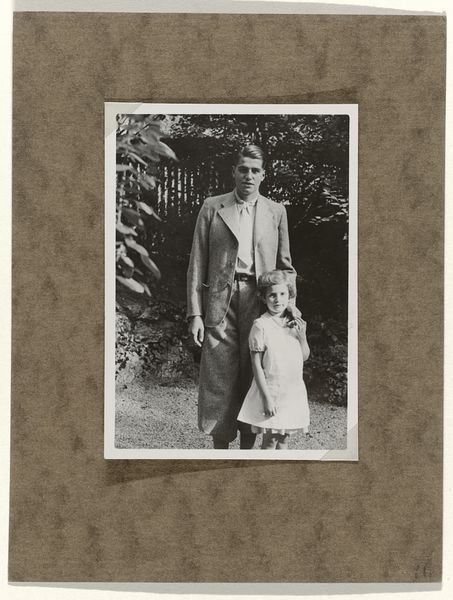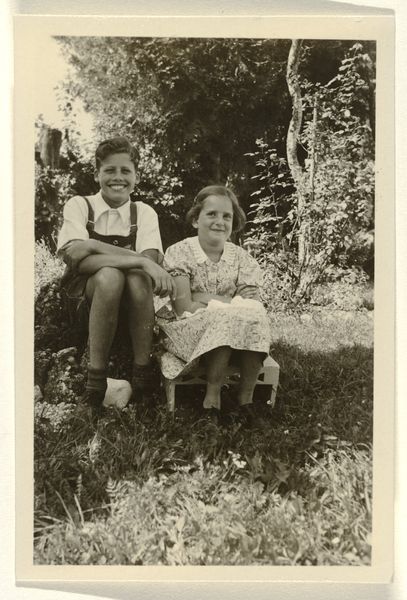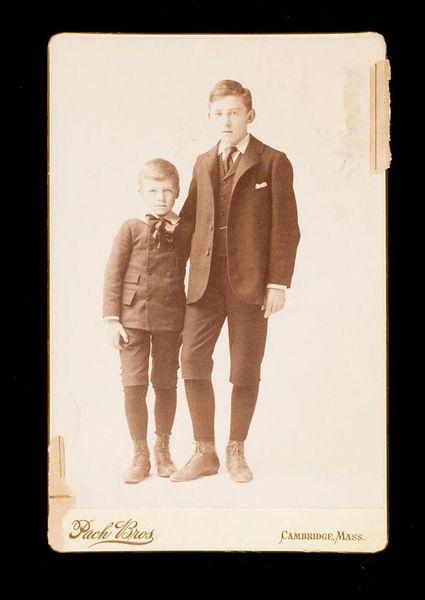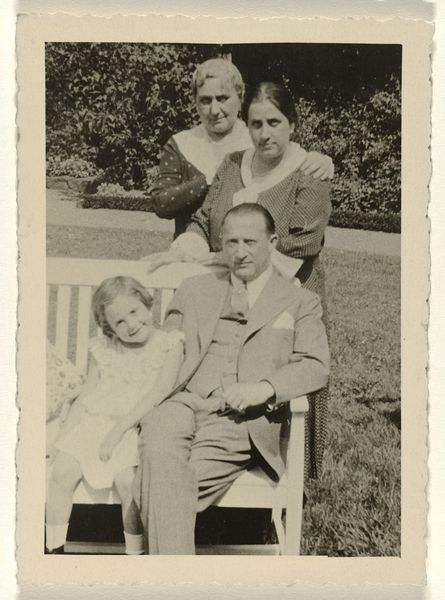
Isabel Wachenheimer haar neven Klaus en Werner Zürndorfer, in de tuin van de familie Wachenheimer in Stuttgart, 1935 1935
0:00
0:00
Dimensions: height 90 mm, width 65 mm
Copyright: Rijks Museum: Open Domain
Curator: Here we have a photograph by an anonymous artist, "Isabel Wachenheimer with her cousins Klaus and Werner Zürndorfer, in the garden of the Wachenheimer family in Stuttgart, 1935." Editor: It's intensely ordinary and overwhelmingly heartbreaking. The lighting feels heavy, and that little girl, looking up so trustingly… it aches. Curator: The grain of the photograph feels really pronounced, doesn't it? Like the materiality almost interferes with the subject, adding another layer between us and the past, while at the same time testifying to the production itself. Editor: Absolutely. The casual realism makes it sting more than any posed propaganda ever could. It looks like just a moment of life—before… well, before everything shattered. Curator: You see that the picture's clipped edges and sepia tone really underscore the nostalgic aspect; its power lies in its testament to lives lived. The texture, though – look at the tweedy jacket on the left, the stark plainness of the little girl's dress, the wool suit – really ground us in a specific time and class. The materiality is speaking so loudly. Editor: Right, those details give these people an unvarnished reality, it also hints to a sense of security in place and time. Looking at it, it's hard not to think of Walter Benjamin and his ideas about photography's aura and how it connects us to historical subjects. I see defiance of oblivion here. Curator: And think about how photographs were becoming increasingly accessible to the middle class around that time; photography enabled wider possibilities for representing themselves – recording family histories. In that sense it feels bound to larger political forces. Editor: I can't shake off that gaze of innocence from that little girl, though. Like a bright spark against the coming dark. This family scene suddenly turned unbearably poignant with the knowledge of the horrors soon to come. It serves as a stark reminder of all that was brutally destroyed. Curator: Indeed, thinking of the materials of this piece, what lingers is that this physical print becomes so weighted down by memory, and acts like some sort of tangible proof against time and erasure. Editor: Well said. And sometimes it’s the unassuming things – the simple family pictures, faded with time, that shout the loudest.
Comments
No comments
Be the first to comment and join the conversation on the ultimate creative platform.
